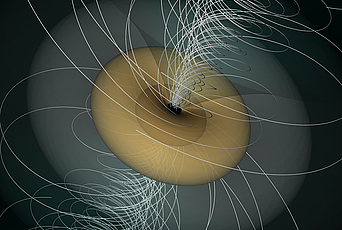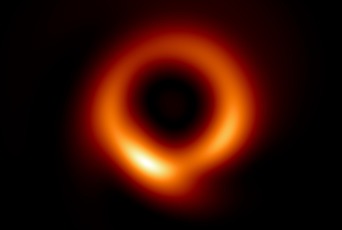New theory explains why white dwarf stars can cheat death
Press Contact

In a paper published today in Nature, scholars from the Institute for Advanced Study; the University of Victoria, Canada; and the University of Warwick, U.K., have proposed a new theory that explains why a puzzling population of white dwarf stars stopped cooling for ten billion years.
Open any astronomy textbook to the section on white dwarf stars and you’ll likely learn that they are "dead stars" that continuously cool down over time. The cooling occurs because the white dwarfs have depleted their nuclear heat source. In the classic picture, this causes the dense plasma in a white dwarf’s interior to freeze, leading the star to solidify from the inside out.
However, an analysis of data from the European Space Agency’s Gaia satellite, published in 2019 by Sihao Cheng, Martin A. and Helen Chooljian Member in the Institute’s School of Natural Sciences, contradicted this standard picture. It showed that some white dwarfs in fact remain hot for many billions of years (a large portion of the age of the Universe). This finding had confounded theorists, but today’s new paper might provide a compelling explanation.
"In order for these white dwarfs to cease cooling down, they must somehow produce additional energy," says Cheng, who also contributed to the Nature paper. "Although we were initially uncertain about what this process might be, we now have a clearer understanding of how it occurs."
This understanding was developed through a collaboration between Cheng, Antoine Bédard of the University of Warwick, and Simon Blouin of the University of Victoria.
They propose that in some white dwarfs, the dense plasma in the interior does not simply freeze from the inside out. Instead, the solid crystals that are formed upon freezing are less dense than the liquid, and therefore begin to float towards the surface. As the crystals float upwards, they displace the heavier liquid downward. The transport of denser material toward the center of the star releases gravitational energy, and this energy is enough to interrupt the star’s cooling process for billions of years.
"One fascinating aspect of this discovery is that the physics involved is similar to something we observe in daily life: the frozen crystals within the white dwarf star float instead of sink. We might compare their behavior to ice cubes floating in water," says Cheng.
Why this happens in some white dwarfs and not others is uncertain, but the authors think it is likely due to the composition of the star.
"Some white dwarf stars are formed by the merger of two different stars. When these stars collide to form the white dwarf, it changes the composition of the star in a way that can allow the formation of floating crystals," says Blouin.
White dwarfs are routinely used as age indicators: the cooler a white dwarf is, the older it is assumed to be. However, due to the extra delay in cooling found in some white dwarfs, some stars of a given temperature may be billions of years older than previously thought. Better understanding the ages and other aspects of white dwarf stars will help scientists reconstruct the formation of our galaxy.
"Our work will necessitate updates to astronomy textbooks," adds Cheng. "We hope that it will also prompt astronomers to reassess the methods employed to calculate the age of stellar populations."
The research is supported by the National Sciences and Engineering Research Council of Canada (NSERC), the Banting Postdoctoral Fellowship program, the European Research Council, the Canadian Institute for Theoretical Astrophysics (CITA), and the Institute for Advanced Study's Fund for Natural Sciences.
This news is adapted from a press release issued by the University of Victoria. Press releases were also produced by CITA and by the University of Warwick.
About the Institute
The Institute for Advanced Study has served the world as one of the leading independent centers for theoretical research and intellectual inquiry since its establishment in 1930, advancing the frontiers of knowledge across the sciences and humanities. From the work of founding IAS faculty such as Albert Einstein and John von Neumann to that of the foremost thinkers of the present, the IAS is dedicated to enabling curiosity-driven exploration and fundamental discovery.
Each year, the Institute welcomes more than 200 of the world’s most promising post-doctoral researchers and scholars who are selected and mentored by a permanent Faculty, each of whom are preeminent leaders in their fields. Among present and past Faculty and Members there have been 35 Nobel Laureates, 44 of the 62 Fields Medalists, and 23 of the 26 Abel Prize Laureates, as well as many MacArthur Fellows and Wolf Prize winners.


